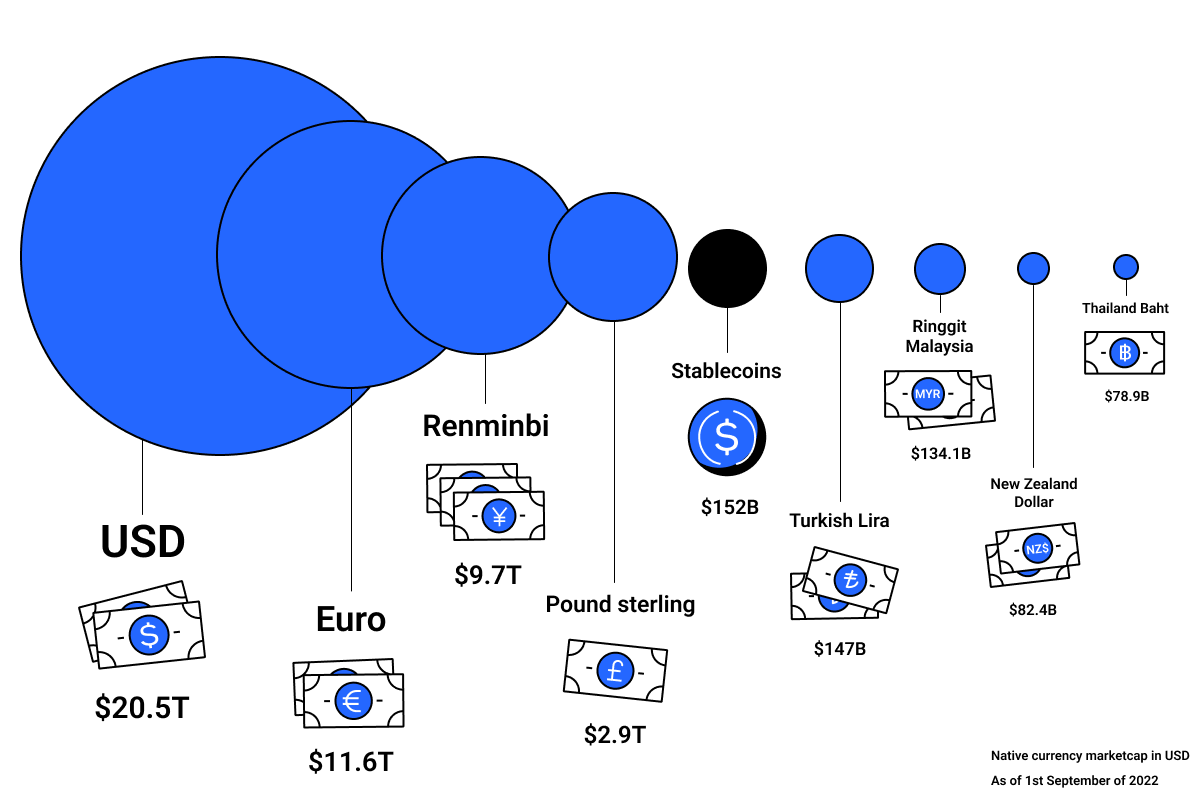Tokens that are pegged to the price of a separate stable asset, most commonly with the US Dollar. Stablecoins are backed by one of these four collateral structures: crypto-backed, fiat-backed, commodity-backed, or algorithmic.
Crypto-backed
Crypto-backed stablecoins work by having other crypto assets as collateral, and this process relies on smart contracts as the issuer. The process of maintaining the peg is similar to the one explained under lending and borrowing.
Fiat-backed
Fiat-backed stablecoins use fiat currency as collateral. This process has been implemented by companies such as Tether and Circle, such that every USDT or USDC issued is backed by 1 USD worth of assets held by Tether or Circle.
Commodity-backed
Commodity-backed stablecoins use real assets that exist in the real world, such as real estate and precious metals. This type of stablecoin is less commonly used in the current ecosystem.
Algorithmic
Algorithmic stablecoins use specialized algorithms and smart contracts to adjust the tokens in circulation, maintaining price stability. As of now, there are three main types of algorithmic stablecoins that includes Rebase, Seigniorage and Fractional-algorithmic stablecoins. In the Rebase algorithm, the stablecoins typically track a specific fiat currency to keep price stability. When the market price of that token falls below the tracked fiat currency, it will reduce the token in circulation to increase the price of the stablecoins and will do the opposite if the market price of the stablecoins goes above.
On the other hand, the Seigniorage algorithm is using a multi-coins system where the other cryptocurrency is used to facilitate the stability of a specific stablecoin. By using the mint-and-burn protocol, the stablecoin will be minted whenever the other pegged cryptocurrency is burned. If the demand for the stablecoin is in rise, the pegged cryptocurrency will be burned to mint more stablecoin to keep the stability. Meanwhile, the Fractional-algorithmic stablecoin is the combination of the first two mentioned algorithmic stablecoins.
